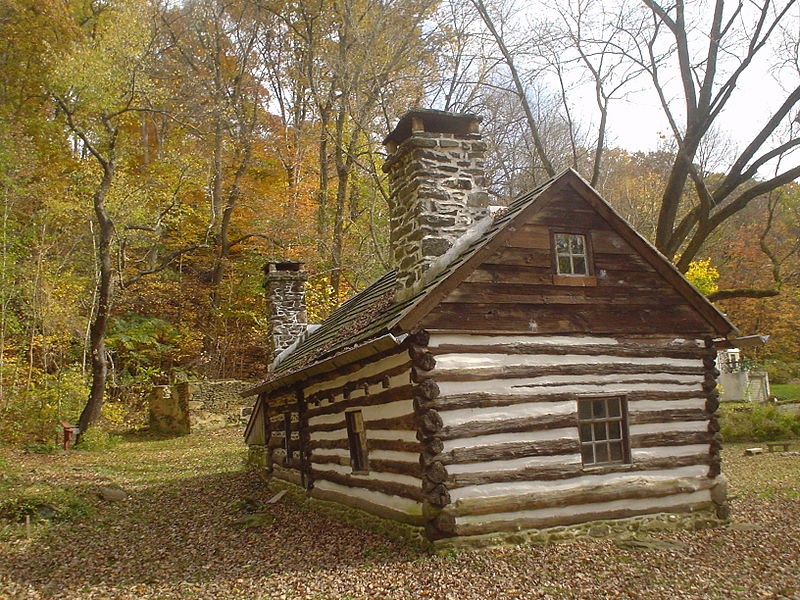
It’s happening now. This is a real SHTF event. Major disaster has hit, power is out, everyone is panicking, grocery stores are being raided and emptied within hours, and cars are grid-locked trying to make their way to safety, anywhere. No one knows where that is.
As Preppers, we have already prepared for this eventuality. We already have our emergency supplies packed, it’s likely we have a plan in place as to where we are heading. And we’re long gone before the panic has set in. However, it’s all very well having your bug out bag ready, learning survival skills such as how to catch your own food, how to filter water, and how to start a fire, but if you don’t have a shelter; you’re missing the most important survival item you need.
If you spend any reasonable amount of time in the outdoors, you’ve probably heard of the ‘Survival Rule of 3’. You can survive:
- 3 minutes without oxygen or in icy water
- 3 hours without shelter in extreme environments
- 3 days without water
- 3 weeks without food
These four rules rely on the previous one being satisfied. So for example, you can only survive 3 hours without shelter if you’re not in icy water, you can only survive 3 days without water if you have shelter from a harsh environment and so on. Therefore, next to being able to breathe oxygen, shelter is the next most important element of survival if you find yourself in extreme weather conditions.
It’s likely that most Preppers will know how to make temporary shelter using materials you can find on the forest floor, but what about if the disaster or crisis descends into total chaos and it’s TEOTWAWKI? (The end of the world as we know it). Would you know how to make a more permanent structure for you and your family to live in? If you’re lucky, you might come across an old underground bunker, but you’ve not left anything else to chance in your methodical planning, so why leave this to chance?
You need to know how to build your own survival cabin. Let’s face it, when SHTF most of us are bugging out to the forest. There is good reason for that. In the forest you’ll find one of the most valuable resources that you need to build a long term shelter: wood. This type of survival shelter is going to require time and effort, so it’s important that you learn the basics right now rather than learn through trial and error and the time and waste resources.

First things first, you’ll want to choose a log cabin plan. You’ll most likely want to build a square or rectangular cabin, around 14×14 foot. We’re going to use that as our example throughout this set of instructions. There are five main steps to building a survival shelter; choosing your site, selecting your logs, laying the logs, openings for windows and doors, and finally, raising the roof. Step one, and to some extent, step two are something you should go and research now. Step three through five, you’ll need to have written down so you don’t make any mistakes when it comes to the build.
Step One: Choose your Site
Get to know the site you intend to escape to now. How far away is it, how long will it take to get there, how will you get there? Choose somewhere you can get to either by foot, or with one tank of gas. Once you’ve found a few places that you can reach without too much difficulty, you’ll also need to make sure it is far away enough from main roads and cities. You don’t want to set up a shelter in plain sight for anyone to come and make their own.
Where are the nearest places for natural materials? You’ll need somewhere close-by to a water supply, plenty of trees to use both for your shelter and for firewood, somewhere that has an abundance of animals that you can trap. Ideally, you’ll also need some softer materials to create somewhere to sleep, initially grass will do.
You’ll also want to consider the temperature year round. If the area you’re settling is made up of hills and valleys, you’ll find both the top and the bottom gets cold quickly. It’s windy at the top, and the valleys trap the cold air. Settle around 3/4 up a hill if you do find yourself in this position.
Scout the area for poisonous plants; don’t set up a permanent shelter if there are any in the immediate vicinity. What are the trees like surrounding your proposed site? You’ll need some for protection, but you should make sure they’re not dead or they might fall down onto your shelter.
One last thing to think about is the natural elements. How will the rain fall and collect, is the land flat? Where does the sun rise and set, make the most of this to heat your shelter if you’re in a cold climate, or ensure you have shade if you’re in a hot climate.
Step Two: Selecting your Logs & Preparing the Site

The trees you choose should be long enough to create the length of your shelter, or double if they’re large enough to get two lengths out of each tree. They will need to be around 10 inches in diameter, to provide you with sufficient insulation. The trees also need to be as straight as possible.
For a survival shelter of 14×14 feet, you’ll need logs that are 16 feet in length. The extra one foot either side of the log allows them to be notched together and provide an overhang to give a sturdy and solid join.
Note: If your logs are 10 inches in diameter, to create a 9 feet high shelter, you will need 11 x 16 ft logs for each side, and a further 10-15 logs to create two gable walls. You should put aside the best 7 logs, to use as the sill logs and the purlin and rafter logs.
Sill Logs: Four logs that will form the base of your shelter
Purlin Logs: Two logs that will join the gable walls and provide a surface to attach your roof
Ridge Log: One log which sits at the top, and joints the two gable walls.
To fell the trees, use your axe to cut them in the direction that they are naturally leaning. Briefly, the best way to fell trees is to make a horizontal cut 1/3 of the way into the tree just above knee height. Next, make a 45 degree cut upwards to meet the end of the first cut. Then, make a cut on the opposite side, around 2 inches above the first cut. The tree should then start falling. Once you have all your logs, cut off all the branches, and debark them using your axe or knife at a 30 degree angle.
Usually when building a log cabin shelter, you’ll want to lay foundations however it’s unlikely you’ll have access to all the heavy machinery and concrete in TEOTWAWKI scenario. Therefore, to prepare your site will be simple. You should clear any debris and leaves away, and level the ground as much as you can. You will need some form of foundation, so without access to concrete, you should do this: bury four upright logs into the ground, leaving around 3-4 inches sticking out of the ground. You will use these as posts to put your sill logs on.
Step Three: Raising the Walls
The first step in raising you walls is to put your four sill logs into place. These logs should be the four that are largest in diameter, straightest and longest. First, you need to take two of them. Use your axe to create a notch (hole) at either end of two sill logs.
To create this type of ‘reverse-saddle-notch’, put your log into the place it will eventually sit (on top of two of the horizontal posts that are buried into the group). Take your knife and mark where the log is going to sit. Using your axe, make a V shape in the underneath side of the log until the notch is large enough to create a snug fit around the horizontal post. Do this at both ends of two sill logs.
Take your other two sill logs, and notch the underside of them to fit onto the top of the two sill logs you’ve already laid. You will now have the perimeter of your log cabin. The rest of the process is simple, but time consuming. This could take you a couple of weeks depending on how much help you have. You are going to continue notching the underside of each log and stacking the walls until you have the height that you want before you start creating the pitched roof.
Step Four: Windows and Doors
To create the openings for your doors and windows, you can use your axe to create a hole. When you reach the height that you want your window or door at, start cutting and removing the logs one by one to make space for a door.
There are lots of tutorials about how to make doors and windows available. Just make sure that you have thought this through, so you’re not left with large open gaps which can get very drafty and will defeat the point of having shelter unless you’re able to cover them effectively.
One such way to make doors is to keep hold of some of the thicker branches when you fell your logs, and use rope or other natural resources such as fibrous plants to tie them together. You might also want to do this for the windows so that you can replace them during the night/when the weather is cooler.
Keep openings to an absolute minimum.
Step Five: Raising the Roof
The shelter is now almost finished, but this is definitely the heaviest and hardest stages of the entire build. You’ll need some good brute strength here. You’re now going to create to triangles on two opposite walls; these will form your gable walls. Continue building the logs up, gradually getting short in length using the same notching method. When you are half way up, you need to take the two purlin logs and notch them so that they connect the two gable walls, one either side of the triangular shape you’re creating.
Carry on building the two gable walls until you reach the tip of the triangle, and then use the large ridge log to connect the gable walls. This can be extremely heavy work depending on the size of the logs, and how much help you have.
Once your ridge log is in place, use some smaller diameter logs to lay over the ridge logs, purlin logs, and the top of the walls, onto which you can attach roof rafters. You might want to use branches, leaves and mulch to create your roof’s finish.
You Survival Shelter
 And there you have it – a long lasting survival shelter than will keep you safe, warm and dry. The instances in which you might need to build a structure of this quality and stability are rare, but as mentioned earlier, rather plan for all eventualities, than end up in a situation of needing a permanent structure and not knowing how to create one.
And there you have it – a long lasting survival shelter than will keep you safe, warm and dry. The instances in which you might need to build a structure of this quality and stability are rare, but as mentioned earlier, rather plan for all eventualities, than end up in a situation of needing a permanent structure and not knowing how to create one.
The beauty of this structure is that trees are available in almost every area of the world, they are one of the most reliable building resources and so if you learn this simple technique, you’ll be able to build yourself a shelter wherever you are.




















